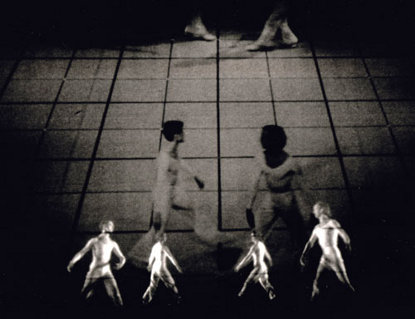Poetry on a Grid: Lucinda Childs’ DANCE
Caitlin Johnson
5/9/2011


Thirty-two years after the original 1979 performance, I got the chance to see Childs’ Dance at UCLA’s Royce Hall. Choreographed by Childs, accompanied by music by Philip Glass and a film projection by Sol LeWitt, Dance is a 60 minute medley of minimal bodies and nonstop movement. Paired dancers would jete on and off stage in a simple combination of movements that would build and disassemble, evolve and repeat much akin to a mathematical formula. The gridded stage of LeWitt’s film and back-and-forth repetition of Glass’ musical segments nicely complemented this combine and disconnect that at once seemed relatively formulaic, yet ultimately resisted any linear structuring.
Geometry and structure might not initially connote the organic, but between the palpable sweat and stamina of the dancers, there is a raw humanity to Dance. Midway through the performance I was reminded of Felix Gonzales-Torres’ Untitled (Perfect Lovers).
With Lovers Gonzalez-Torres set two battery-operated clocks in unison, which would then inevitably fall out of sync. Watching sets of dancers enter and exit the stage, convene and disperse, all the while trying to stay in tune with each other and a dizzying melody, I was reminded of the poetry of Lovers. While there is a duality both between the dancing pairs and the dance and film, there is never a precise one-to-one correlation. And yet there is no discordance. The symbiosis of music, set, film, and dancers’ bodies work to further reveal one another while folding into the larger, masterwork of Dance.

